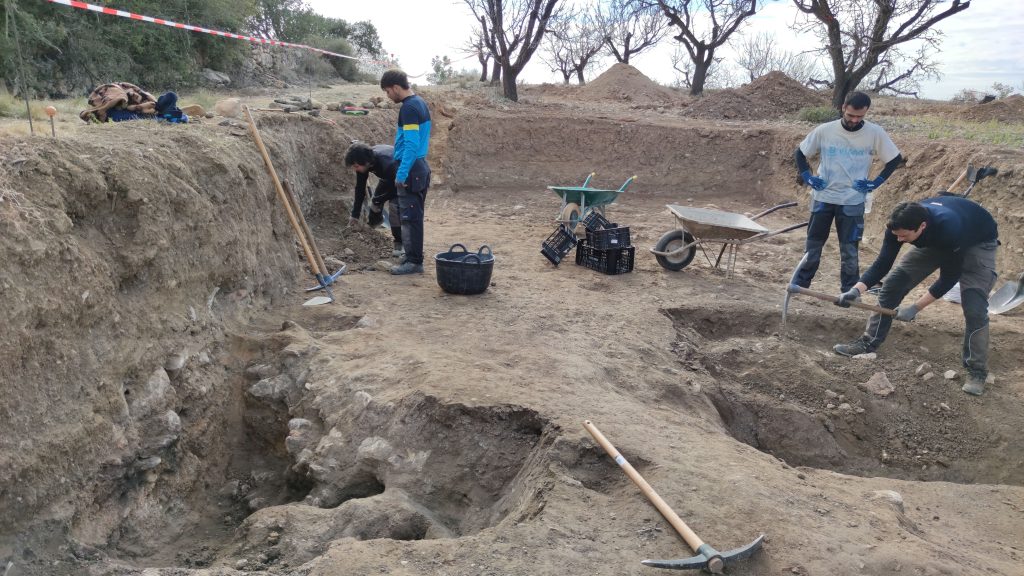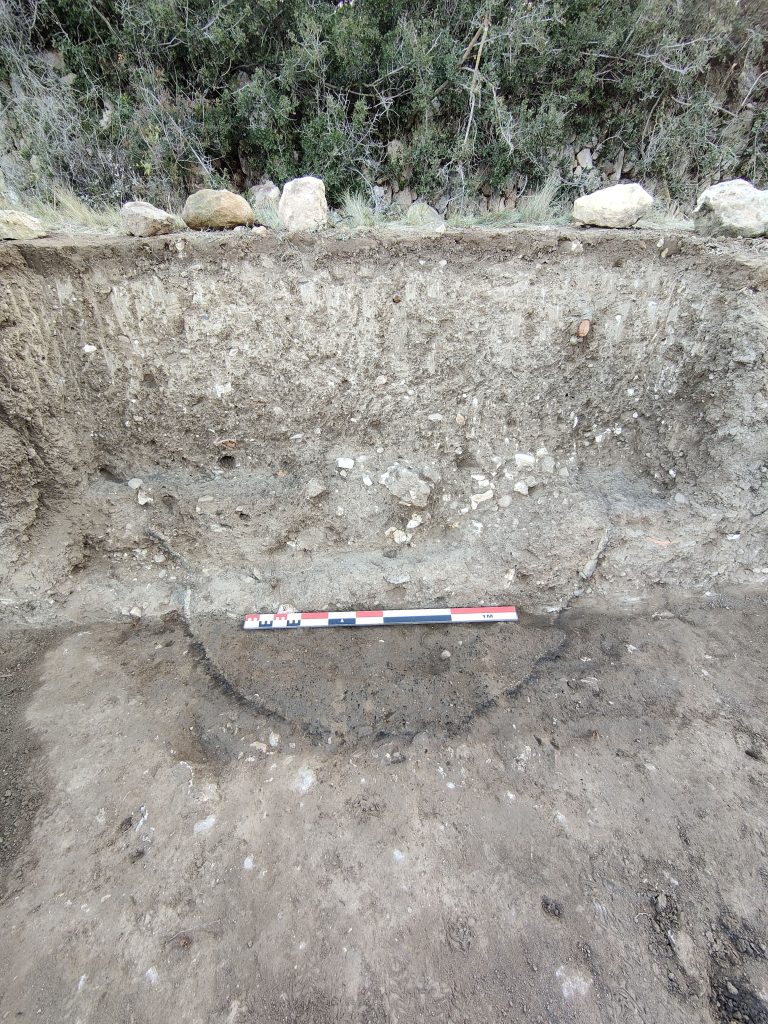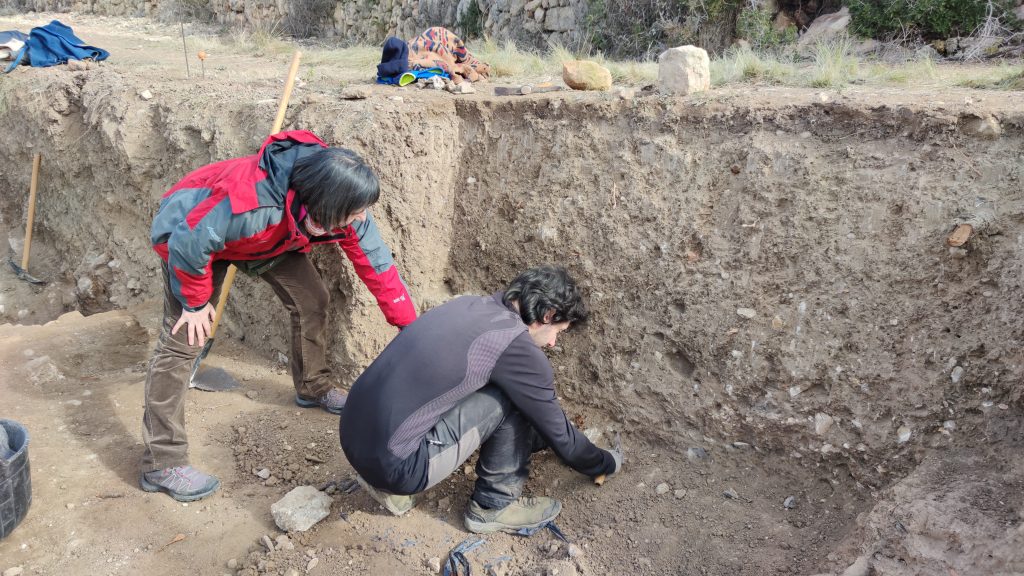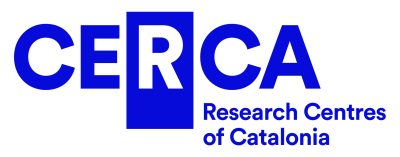
This February the ICAC started the ninth archaeological campaign at the site of Costa de la Serra (La Secuita, Tarragonès).
From February 2 to March 3, an intervention is carried out with a small field team made up of ICAC researchers and technicians, and students of the inter-university Master’s Degree in Applied Classical Archeology – MACA (URV-ICAC-UAB).
Costa de la Serra archaeological site is in the municipality of La Secuita, about 13 km north of the city of Tarragona. It is a small late-Republican Roman fort, dating from the end of the 2nd century BC and the beginning of the 1st century BC. Since 2014, the ICAC has carried out archaeological interventions there, which have revealed the existence of a military settlement that was intentionally destroyed at the time of its abandonment.
The main purpose of this 2023 campaign is to delimit a large depression located in the highest area of the archaeological site and whose functionality is unknown. In previous campaigns, the south-eastern sector of the late-republican fortification was covered and the southern façade of the fortification was defined with the layout of two sections of wall (approximately 50 m long).

Archaeologists work with different hypotheses and expect to be able to determine the relationship between the uses of this element with the rest of the structures identified on the site.
On the other hand, the stratigraphy continues to provide a rich material context, both at the level of ceramic materials and other elements (fragments of construction elements such as pavements, cladding, and ceilings) that will allow researchers to better understand the role of the architecture in the place. In this sense, one of the first findings of the campaign has been the identification of a combustion structure with a lining (possibly an oven).

Research at Costa de la Sierra site (La Secuita, Tarragona) is part of a four-year project (Catalan Government call) on Western Cesetania in the first millennium BC (CLT009/22/00012), led by Maria Carme Belarte (ICREA-ICAC) and Joan Canela, and which is the continuation of a previous project on the same topic.
The archaeological works on the field at the Costa de la Sierra site began in 2015 and, since then, there have been archaeological works on a yearly basis, with different work teams on each occasion. With funding support from the City Council of La Secuita and the Department of Culture of the Generalitat de Catalunya.
The archaeological site was located thanks to the participation of Marc Dalmau, a neighbour of Argilaga (La Secuita) and former student of the ICAC’s former master in Classical Archeology (URV-UAB-ICAC), who was involved as a volunteer in one of the ICAC’s archaeological campaigns.

Funded by:
The Catalan Institute of Classical Archeology (ICAC) is a CERCA centre created as a consortium in 2003 by the Generalitat de Catalunya and the Rovira i Virgili University. It is based in Tarragona, a city recognized as World Heritage by UNESCO in 2000 and is specialized in research and advanced training in Classical Archaeology. #SomCERCA!
More info at www.icac.cat
Related News:
«The last archaeological campaign in Costa de la Serra (La Secuita, Tarragona) allows defining the southern front of the fortification», ICAC, August 31, 2021.
«En marcha los trabajos de excavación en el yacimiento de Costa de la Serra (La Secuita, Tarragona)», ICAC, July 13, 2021.
«Recent archaeological works in Costa de la Serra (La Secuita, Tarragona) allows defining the southern façade of the fortification», ICAC, August 1st, 2020.
«On-going excavation works in the protohistoric site Costa de la Serra (La Secuita, Tarragona)», ICAC, July 1st, 2020.
«New findings in the Roman fort of Costa de la Serra (La Secuita, Tarragona)», ICAC, July 26, 2019.
«Descoberta la muralla que limita el fortí romà de la Costa de la Serra (la Secuita)», ICAC, July 22, 2016.







